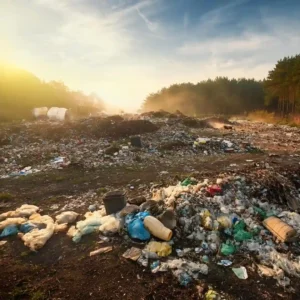In recent decades, the term “Dying Earth” has gained prominence as a dire warning about the state of our planet. This phrase encapsulates the many environmental crises we face: climate change, deforestation, ocean acidification, loss of biodiversity, and pollution, among others.
It wouldn’t be unfair to say that humanity had focused more on advancing civilization than paying attention to the planet’s health.
While we dream of driving fancy cars, tall chimneys that escape the smoke from our multi-billion companies, drilling and making money from earth’s natural resources, we haven’t thought so much about the negative effect our activities have on the environment and planet.
For some years now, the planet has been protesting and pleading via fire outbreaks, flooding, and extreme and strange temperature ranges, yet, our activities still suggest that we are not bothered about these seemingly peaceful demonstrations.

Many scientists have suggested that if current environmental challenges and practices are not addressed, our civilization could face severe crises within the next few decades. It is sacrosanct that proactive measures in sustainability, technology, and environmental management are the only practices that will appease the planet and extend the time Earth remains habitable for humanity.
This post will suggest some important practices that if observed, will better the earth and our planet.
ENVIRONMENTAL HEALTH
The sustainability of Earth for human life depends on various factors, including environmental health and human activity. While Earth itself may remain until the sun evolves into a red giant, the conditions that make it suitable for human life could change much sooner due to issues around climate change, pollution, deforestation, and resource depletion. To avoid these issues, humans should:
1. Plant More Trees

Have you heard of the Green Belt Movement? This movement inspired the planting of more than 30 million trees in Africa. Even though this movement was inspired by a Nobel Laurette winner and tree planter Wangari Maathai, it didn’t get the publicity it needed to be sustainable and thus enforced by governments.
It will interest you to know that each mature tree absorbs about 22 pounds of carbon dioxide per year. Won’t this notorious gas be mopped up by billions of trees if we decide to plant?
In 2008, a German teenager Finkbeiner said, “One trillion trees could capture 25 percent of all human-made CO2 emissions which will help keep global temperature rise below the crucial 20C limit.
Finkbeiner further suggested that 1 Million children should plant 1 million trees in every country on earth and offset CO2 emissions all on their own, while adults are still talking about doing it.
It is worth noting that planting trees does not replace the need to avoid carbon emissions but is a necessary addition to mop up the greenhouse gas.
2. Reduce Toxic Wastes:
The length of time that toxic wastes can be stored on the planet without causing irreversible harm depends on several factors, including the type of waste, how it is stored, and the capacity of the planet to naturally break down or neutralize the waste.

Some toxic wastes can persist in the environment for hundreds or even thousands of years, while others may break down relatively quickly. Encouraging community-wide recycling initiatives can significantly reduce landfill waste.
Implementing composting programs helps in managing organic waste responsibly. Educating households about proper recycling practices reduces contamination and improves recycling rates. Promoting the use of reusable products and minimizing single-use plastics are pivotal strategies in waste reduction.
It is bad practice to continue producing and storing toxic waste indefinitely. It is important to find safe and sustainable ways to dispose of or neutralize toxic wastes to prevent long-term environmental and public health impacts.
This may involve developing better waste management practices, investing in research and technology for waste treatment and disposal, and reducing overall waste production through conservation and recycling efforts.
3. Promote Renewable Energy

Transitioning to renewable energy sources like solar, wind, and hydropower is one key way we can help sustain the earth. This transition will significantly reduce carbon emissions and reliance on fossil fuels.
Renewable energy technologies have become more affordable and efficient, making them a viable option for many regions. I am happy knowing that government policies are backing these alternatives to fossil. Also, knowing that scientists and companies are investing heavily in seeing that we transit faster to renewable energy sources brings great delight.
Supporting policies, subsidies, and incentives can accelerate the adoption of these technologies. Individuals can consider installing solar panels or opting for green energy plans from their utility providers and I encourage governments to adopt these suggestions.
4. Encourage Public Transport and Eco-Friendly Transportation:
I can’t write enough to completely exhaust this particular point. Promoting public transportation can significantly reduce traffic congestion and greenhouse gas emissions. Cities can improve their public transport systems to provide safer, more reliable options.
Encouraging walking and cycling through the establishment of bike lanes and pedestrian zones can also help. Supporting car-sharing services can further promote eco-friendly transportation.

Cars are often seen as symbols of freedom and convenience, but their widespread adoption comes at a hefty environmental cost. The transportation sector is a significant contributor to greenhouse gas emissions, accounting for nearly 29% of total emissions in the United States alone.
Cars burn fossil fuels, release harmful pollutants, and occupy substantial land space for roads and parking, all of which exacerbate air quality issues and contribute to climate change. Public transportation systems such as buses, trains, trams, and subways, offer a strategic way to alleviate the environmental burden posed by individual car usage.
According to the American Public Transportation Association, public transportation saves approximately 45 million metric tons of carbon dioxide annually. By moving more people using fewer vehicles, public transport substantially cuts down on per capita emissions.
Public transportation also promotes denser, more efficient land use. Cities that prioritize transit-oriented development encourage mixed-use spaces where people can live, work, and play without relying on cars. This approach not only minimizes urban sprawl but also conserves green spaces, reduces habitat destruction, and promotes biodiversity.
Now, the emergence of eco-friendly transportation options is transforming how we think about getting from one place to another. Bicycles, electric scooters and trains, and pedestrian-friendly initiatives are becoming more popular, presenting travelers with sustainable modes of transport.
5. Educate on Sustainable Practices:

Educational campaigns that promote sustainability can significantly influence public behaviors and attitudes toward the environment.
Workshops, school programs, and community events focused on conservation, energy efficiency, and sustainable living practices empower individuals to make eco-friendly choices. Partnerships with local organizations can strengthen outreach and effectiveness.
Educating the youths about sustainable practices empowers them to become stewards of the Earth. Schools and universities that focus on sustainability should teach students about their roles as consumers, advocates, and decision-makers.
Engaging students in activities related to sustainable agriculture, waste management, and energy conservation helps instill a sense of agency, motivating them to advocate for eco-friendly practices in their families and communities.
Salt Hub is dedicated to promoting eco-friendly practices. I encourage more advocacies from the youths and stakeholders. In the future, we are going to set up workshops and events that will further educate the world on eco-friendly practices.
Advocate for Policy Changes:
Engaging in local, state, and national politics can drive policy changes that prioritize environmental protection. Building coalitions with like-minded organizations and participating in advocacy campaigns can amplify the call for legislative action on critical environmental issues.
By funding the development of clean energy technologies and discouraging reliance on fossil fuels will be good policies and can help decrease the carbon footprint of industries and households.
Policies to adopt the carbon pricing mechanisms, such as carbon taxes or cap and trade systems, will also compel companies to take responsibility for their emissions. By putting a financial cost on carbon emissions, these policies incentivize businesses to innovate and adopt cleaner practices, fostering a shift toward a low-carbon economy.
Voting for candidates with strong environmental platforms and supporting sustainable business practices within communities can create a more substantial impact.

CONCLUSION
The Dying Earth narrative serves as an urgent reminder of the fragile state of our planet. Climate change, biodiversity loss, pollution, and resource depletion threaten not only the natural world but also human health and socio-economic stability. While the challenges are substantial, they are not insurmountable. By adopting sustainable practices, advocating for robust policies, and fostering public awareness, we can initiate a transformative shift toward a more sustainable future.
As individuals, communities, and nations, we hold the power to drive change. The time for action is now. For the sake of our beautiful planet and future generations, we must rise to the occasion and reclaim our role as stewards of the Earth.
Please share your opinion on how we can heal the earth.

It is fascinating how simple lifestyle changes like switching from plastic takeouts to paper bags can go a long way in remodeling our earth’s chances of survival. I believe this struggle to achieve a greener earth is possible. In Nigeria, if we make baby steps, we can take giant strides. Thanks to the author for letting us know that a renewable energy is sourced from a renewed mind.
Thank you for your feedback, belief and suggestion. Truly, paper bags are a safer options for our environmental compared to plastic bags. I will dedicate a post to support your contribution. Thank you again